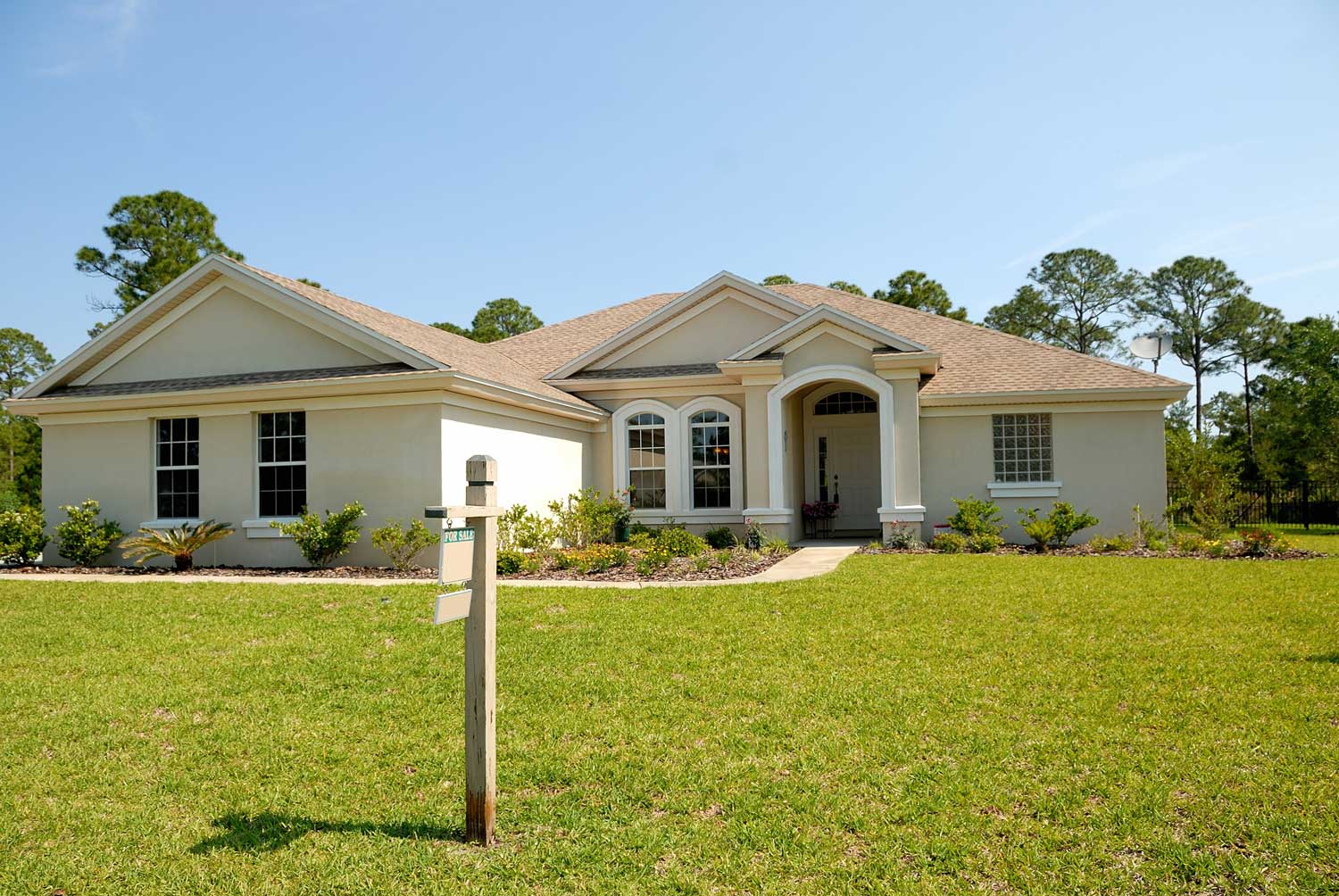Jump Ahead To:
Today’s housing and rental markets have left many Americans feeling tight on funds or struggling to find a place to live. Rent prices nationwide have been rising at unprecedented rates since the pandemic, combined with skyrocketing home prices and a housing supply shortage in the past few years. Although prices are finally starting to stabilize and even fall in many cities, interest rates are now going up which makes home loans less affordable. Rising costs and limited supply have made it hard for many people to meet their housing needs without serious financial stress.
You may be in what’s called a cost-burdened living situation if you pay more than 30% of your monthly income on housing. This means that after paying rent, too little of your budget is left over for other expenses and savings. But 30% is just a general rule. Rising prices of other necessities like food and gas have left many Americans feeling cost-burdened even without exceeding that threshold, and the unfortunate fact is that nearly 11 million households – or one in four of all households who pay rent – actually spent more than 50% of their incomes on housing in 2018.
If you or someone you know is feeling the burden of these pricey markets, you may be wondering what options are available for assistance. Luckily, there are ways to either find help with expenses, or to get out of an overpriced living situation and find somewhere more affordable. Read on to learn about options for moving assistance, rent payment subsidies, and homebuyer programs, as well as which states and cities are most affordable to live in.
Low-income Moving Assistance
With prices rising across the country, people from all walks of life may consider relocating to a less expensive area. However, there could be more immediate reasons why someone would leave their current living situation, including switching jobs, health-related issues, serious financial hardship, or mistreatment by someone else in the household. These issues could mean you have to leave now, without much chance to save money or make a plan.
Even if you can find a new place to live, the process of moving can cost hundreds or even thousands of dollars, not to mention the physical difficulty of transporting your possessions from place to place. If you find yourself in dire need of a move but unable to make it happen, you may be eligible for assistance from charities or government programs depending on your circumstances.
Charities That Help With Moving Expenses
Each city has its local charities, which can assist with moving, housing, and temporary shelter, so you should look around to see what’s available in your area. Here are some resources to help you find those services, along with national organizations that can help no matter where you are moving:
- Dial 211 anywhere you are in the U.S. to get connected with local support agencies. This phone number can be used for all types of human services, not just moving and housing.
- Modest Needs is a national nonprofit that provides emergency grants to low-income individuals and families who need a little extra money to deal with unexpected circumstances. This could include the need to move in an emergency.
- YWCA supports women, children, and families with all kinds of needs, including transitional housing and general help as necessary.
- Catholic Charities USA offers programs for affordable housing, refugee services, and more for those in need.
- The Salvation Army is an organization focused on homelessness, and local centers around the country can help with all manner of needs including transitional housing and transportation.
Government Benefits for Moving Expenses
The U.S. government provides cost assistance for moving based on certain circumstances, and states often have their own versions of programs as well. The following are some federal benefits that may be available to help you move.
- The IRS moving expenses deduction allows you to write off costs of moving from your taxes if you have to relocate for work.
- If you become displaced because of a federally funded development or property acquisition, you can get assistance in moving through the Real Estate Acquisition and Relocation program.
- FEMA’s Individuals and Households Program covers a variety of needs for anyone displaced or otherwise impacted by natural disasters in the United States.
- Benefits.gov is a database for all kinds of federal assistance, where you can search for additional benefits based on unique situations like disability or unemployment.
Low-income Housing Assistance
Perhaps your situation doesn’t demand immediate relocation or financial rescue, but there are reasons why you want to move and you’re wondering how to afford it. Maybe you feel priced out of your current living situation and need to live somewhere cheaper. Perhaps you are interested in moving out of your parents’ house and paying rent for the first time, or maybe you’ve been renting for a while and would like to buy a home. In any case, you may find it difficult to locate affordable housing. Luckily, there are resources available to help low-income families and individuals in a variety of situations.
Finding Affordable Rental Housing
For families and individuals who simply can’t afford rent in their area, the U.S. Department of Housing and Urban Development offers the following programs that can help. These are federally funded but administered through local agencies, so you should contact your public housing authority to get specific information.
- The federal Housing Choice Voucher Program, otherwise known as Section 8, provides help with paying rent for very low-income families and individuals. If your household makes less than half the median income in your area, you are likely eligible for Section 8 assistance.
- Public housing is another option for very low-income families and individuals. This program provides subsidized housing units in many cities and some rural areas, which people can rent for an amount that’s based on their income. You can use the public housing page on Benefits.gov to find information specific to your area and apply for assistance.
Help Paying Rent
If you wish to stay in your current living situation, but don’t know how to keep paying rent, you could qualify for assistance through any number of other programs, either from the federal government or local and state governments.
- The federal Emergency Rental Assistance Program began during the COVID-19 pandemic in 2020, and is still available to assist people who face difficulty paying rent or utilities. You may be eligible if you are unemployed or if you make significantly less than the median income for your area.
- State and local programs are available in most areas as well. You can search for them with the rental assistance finder from the Consumer Financial Protection Bureau.
- The National Low Income Housing Coalition offers additional help in finding local resources and in avoiding eviction for those who need it most.
Home Buying Programs
If you are interested in buying a house but aren’t sure how to afford it, you should look into state-sponsored programs for down payment and mortgage assistance. Many banks and credit unions even offer special accounts that can help first-time buyers meet their goals. In addition, there are several federal programs designed for low-income households who want to purchase a home.
- The Federal Housing Administration can help you secure a loan and provides other types of assistance to low-income homebuyers.
- Under the Section 8 Housing Choice Voucher program, renters may qualify to use their voucher for homeownership expenses instead of rent after meeting certain qualifications.
- The Section 184 Indian Home Loan Guarantee Program can help with home mortgages for indigenous families.
- The U.S. Department of Veterans Affairs offers home loan guarantees and other housing-related programs to military veterans and their families.
- The USDA Rural Housing Service can guarantee home loans and offer other benefits to low- and moderate-income buyers in rural areas.
Most of the options listed above are designed for helping those in extreme need or households with very low incomes. Many people may not qualify for these types of programs, but who remain legitimately cost-burdened by an overpriced living situation. If this is you, you may consider options like moving to a less expensive part of town, or even moving long-distance to a new place that’s more affordable.
Considerations for Moving Long Distance
If you’ve considered moving to a state with a lower cost of living, you are certainly not alone. Housing-related reasons, like the desire for a bigger home or a cheaper place to live, are top motivators for people to move, according to the U.S. Census Bureau. Although moving across state lines remains relatively uncommon compared to moves within the same county or state, the state-by-state numbers do show a tendency for people to move from more expensive states to less expensive ones.
For example, census research shows that New York experienced a record number of moves away from the state in 2021, mostly due to people moving out of New York City. The story is similar in California, where many cities saw people moving away, but in particular, movers from San Francisco were most likely to leave the state.
As for where people are moving to, census data shows that the South is a top destination, with cities like Orlando, Raleigh, and Charlotte, North Carolina among the top-growing metro areas in the country. Besides the southern states, popular options for inbound movers are low-cost Western states like Arizona and Idaho.
If you feel cost-burdened by your present housing situation, you could consider joining the trend of moving to a state with a lower cost of living. By doing so, you’ll have a better chance at affordable rent or buying a home. Deciding where to move will of course depend on a range of personal factors, but identifying the most affordable U.S. states is not a bad place to start.
Most Affordable States To Live In
Some states have lower costs of living than others, meaning that everyday expenses in those states tend to be lower than elsewhere in the country. The Cost of Living Index measures the cost of living within each state against the average nationwide. The index sets the national average at 100, so any state with an index value less than 100 is relatively cheap to live in.
Here are the top 10 most affordable states, ranked by their cost of living index according to World Population Review. Each is also shown here with the median price of a single-family home in that state, according to Zillow home value data from May 2022, and with average monthly rent for a one-bedroom apartment according to a 2021 report by GOBankingRates.
#1 Mississippi
- Cost of living index: 83.3;
- Median single-family home price: $179,000;
- One-bedroom apartment average rent: $683.67.
#2 Kansas
- Cost of living index: 86.5;
- Median single-family home price: $228,000;
- One-bedroom apartment average rent: $688.25.
#3 Alabama
- Cost of living index: 87.9;
- Median single-family home price: $222,000;
- One-bedroom apartment average rent: $710.17.
#4 Oklahoma
- Cost of living index: 87.9;
- Median single-family home price: $191,000;
- One-bedroom apartment average rent: $674.50.
#5 Georgia
- Cost of living index: 88.8;
- Median single-family home price: $337,000;
- One-bedroom apartment average rent: $949.33.
#6 Tennessee
- Cost of living index: 89;
- Median single-family home price: $322,000;
- One-bedroom apartment average rent: $799.42.
#7 Missouri
- Cost of living index: 89.8;
- Median single-family home price: $247,000;
- One-bedroom apartment average rent: $722.58.
#8 Iowa
- Cost of living index: 89.9;
- Median single-family home price: $208,000;
- One-bedroom apartment average rent: $646.92.
#9 West Virginia
- Cost of living index: 90.5;
- Median single-family home price: $152,000;
- One-bedroom apartment average rent: $583.17.
#10 Indiana
- Cost of living index: 90.6;
- Median single-family home price: $236,000
- One-bedroom apartment average rent: $717.42.
Trends in Rental Markets Across the Country
It’s nice to imagine living in a state where things are cheaper, but moving to a new state is not a decision to be taken lightly. To decide if it’s worthwhile to relocate your life, whether to a new state or even within your current city, it’s helpful to know about the trends where you live — whether or not housing costs are rising and by how much.
Even though rental rates and home prices have gone up as a whole, there are cities where the numbers are stabilizing or even starting to fall. The recent Zumper National Rent Report reveals trends for U.S. metro areas, so you can see how rent prices are changing where you live and in the places where you might think about living.
Major Cities Where Rents Are Still Rising
- New York City is the largest metro area in the country and the most expensive rental market. Even as some people move away, prices are continuing to rise at more than 30% per year.
- Los Angeles, CA is the nation’s second-largest metro area, though it’s shrinking slightly as people move out of California. Nonetheless, rent prices continue to rise at nearly 20% per year.
- Chicago, IL is the nation’s third-largest metro and also shrinking slightly, but rent prices are rising at about 20% per year.
- Boston, MA is among the nation’s most expensive rental markets, and prices are continuing to rise at about 15% per year.
- Dallas, TX is a hot-spot metro area that’s growing faster than most others. Unsurprisingly, rent prices in Dallas are rising, but at less than 15% per year.
- Phoenix, AZ is the fastest-growing metro in the entire country, and its rent prices are rising by more than 15% per year.
- Atlanta, GA is one of the largest metros in the South, and growing. Rent prices here are rising at more than 10% per year.
- Philadelphia, PA remains relatively affordable compared to other large metros, and its prices are rising moderately at less than 10% per year.
- Washington, DC rent prices are rising more slowly than other top metros, at less than 5% per year.
Major Cities Where Rents May Be Starting To Fall
- Houston, TX is a fast-growing metro area, but rent prices show signs of stabilizing in 2022.
- Las Vegas, NV, despite rapid population growth and rental price growth in 2021, is leveling off in 2022.
- Pittsburgh, PA has a metro area that’s gradually shrinking in size as people move away. Rental prices are stabilizing and may even start to fall.
- Cleveland, OH is a metro area that’s been declining in population for decades, and though rent prices rose in the past few years, they are beginning to fall in 2022.
- Milwaukee, WI is another Midwest metro that’s shrinking slightly, and rental prices have dropped about 5% from what they were in 2021.
Rental rates and home prices have reached historic highs in many places across the country recently, so there’s no reason to feel alone if you become cost-burdened by your living situation. Although the solution is never easy, there are resources available if you or a loved one needs help. It’s also good to know that housing markets in some places are cooling off a bit, so it may be possible to find affordable housing if you’re able to make the move. Here is a great article on how to compare moving company quotes that will help you make that move once you’ve found a housing situation that works for you.
*Data current as of the date of publication.
- The 5 Best Neighborhoods in Saint Louis (Updated 2024) - March 15, 2024
- Is Moving to Pennsylvania Right for You? A 2024 Guide. - March 4, 2024
- The Best Neighborhoods in Cleveland (Updated 2024) - February 15, 2024




